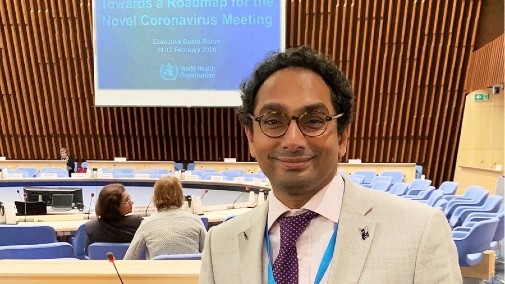York academic leads world’s first multi-vaccine animal efficacy studies in the fight against COVID-19
Posted on 3 April 2020

Professor Vasan
Professor Seshadri Vasan, who holds an honorary chair in Health Sciences at the University of York, is leading the Dangerous Pathogens Team at the Commonwealth Scientific and Industrial Research Organisation (CSIRO).
His team has shown that ferrets could be used as preclinical model for COVID-19 vaccine and therapies. Professor Vasan, who is currently based in Australia at the Australian Animal Health Laboratory, has found that the animals are susceptible to SARS-CoV-2, as reported by the journal ‘Nature’.
Vaccines
The researchers are now studying the course of infection in detail, and started efficacy studies on vaccines that are due to enter Phase 1 clinical trials in UK, USA and China.
Ferrets are a popular model for influenza and other respiratory infections because their lung physiology is similar to that of humans, and researchers hope they will mimic aspects of COVID-19 in people, such as its spread.
The preclinical research is funded by a partnership between CSIRO and the global Coalition for Epidemic Preparedness Innovations (CEPI) which is also funding eight vaccine development initiatives.
Clinical trials
Two of these candidates – one from Oxford University and another from Inovio Pharmaceuticals – are due to enter Phase 1 clinical trials with healthy volunteers. But before they can advance to Phase 2, it will be necessary to complete efficacy testing in animals, so CEPI has funded Professor Vasan to run the world’s first multi-vaccine efficacy studies in animals.
Oxford’s vaccine is currently envisaged as intramuscular injection. Professor Vasan is additionally investigating if giving it through the nose (intranasally) would confer additional protection due to mucosal immunity, and whether one or two doses will be necessary for Oxford’s vectored vaccine and Inovio’s DNA vaccine.
Professor Vasan said: “We are operating at speed in response to a global public health emergency while adhering to strict attention to detail and regulatory requirements which makes this so challenging. We’ve grown the virus for our research and have also reconfirmed the genomic sequence published by the Doherty Institute.
“Having demonstrated that ferrets are susceptible to this virus, we have designed a staggered challenge study to get timely information on vaccine efficacy.”
Chair of CEPI, Jane Halton, said: “These preclinical trials are very significant. This is world leading technology, and this is the first time that we’ve done these animal model tests to look at two candidate vaccines both of which the CEPI coalition has provided funding towards.”
Virus
The team are also investigating the physical and molecular characterisation of the virus to find differences and similarities with other known coronaviruses. They have worked with bioinformaticians and analysed the 181 published genome sequences from the current COVID-19 outbreak to understand how changes in the virus affect its behaviour and impact.
Professor Vasan added: “The virus strain can be currently organised into three major clusters, with more emerging. Some of the mutations in the virus may be significant for the development and evaluation of new diagnostics, drugs and vaccines, so it is very important for us to understand it.”
Explore more news

Sodium channels in breast cancer cells a promising target for future treatments, study reveals
Thursday 25 July 2024

Cooling the classroom: University of York researchers to investigate UK schools’ responses to hot weather
Wednesday 24 July 2024

Hunter-gatherers kept an 'orderly home' in the earliest known British dwelling, study shows
Tuesday 23 July 2024

Study uses Game of Thrones to advance understanding of face blindness
Tuesday 23 July 2024

York academic contributes to new report on men’s health which reveals disparities between most and least deprived areas in the UK
Wednesday 17 July 2024
Media enquiries
Our response to the coronavirus pandemic
We're working with partners in York and further afield as part of a global effort to fight the COVID-19 virus. From covid analysis in the labs to producing face shields for the frontline, we're using our knowledge and expertise to support the effort.
